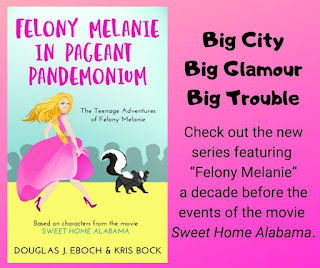I’ve
been talking about writing magazine nonfiction for young people (click the “writing
for magazines” link in the labels list). This week covers advice on how to get
started. The following is excerpted and adapted from You Can Write for Children: A Guide to Writing Great Stories,
Articles, and Books for Kids and Teenagers.
While
new writers often aim for the best-known magazines, it’s easier to break in at
smaller specialty or regional publications. Highlights
for Children may be found in homes, libraries, and doctor’s offices across
the country, but because it’s so well known, the editors receive about 800
manuscript submissions every month. That’s a lot of competition.
Meanwhile,
the lesser-known classroom magazine Current
Health Kids only receives one or two submissions each month. Magazines with
a narrow and unusual focus may have a hard time getting enough material, so
when they find a good writer, they want to build that relationship. You’ll find
thousands of specialty magazines listed in market guides.
Even
if your focus is writing for children, you might also consider writing for
publications aimed at teachers, parents, librarians, or local families. Maybe a
city or regional magazine would be interested in an article about a children’s
museum or a great family vacation spot.
Or
consider profiling local kids who are doing something interesting. Local or
regional magazines can be open to newcomers. “I believe in giving new writers
an opportunity to write for our publication,” says Susan M. Espinoza,
Editor of enchantment. The magazine, published by the New Mexico Rural Electric
Cooperative Association, is targeted at adults but sometimes profiles local
young people. “It spices up the writing, and a new writer may have a new story
idea we have never come across before.”
Just
be prepared to work hard to get that first job. “Research the publication ahead
of time,” Espinoza suggests. “What is the magazine’s target audience and
focus? As a new writer, establish a relationship with the editor. Meet the
editor’s deadlines. Don’t hesitate to ask the editor for feedback.”
What Are Your
Strengths?
Consider
your own interests, talents, and experiences, as Bobi Martin did. “When my
daughter became interested in Junior Showmanship, a special class for young
people at dog shows, I saw an opportunity to write an article for Dog World Magazine. I did my research
and sold the article, happy just to have made a sale.”
Then
the editor asked her to cover two kennel club shows a year for the magazine,
which led to doing related feature articles and eventually to six years of
writing a regular column for Junior Handlers. “Write about topics that matter
to you,” Martin advises. “You can always research for more information, but if
you don’t care about your topic, that will show in your writing.”
Was
she incredibly lucky? Yes and no. A good way to build a magazine career is to
cultivate long-term relationships with a few magazines. After you make that
first sale, the door is open a little wider. At the Cobblestone magazines,
Lusted says, “If someone has written for us just once or twice, they generally
follow the same query process as everyone else, although the editor will
definitely look at them more favorably because they’ve already written for us.
They might also be more willing to give some feedback on a query or tweak it a
little.”
Get in and
Stay in
As
the relationship develops, it typically gets even easier to make a sale. “Their
queries might be slightly less detailed, and they won’t need to send a writing
sample,” Lusted says.
Most
editors are delighted to find writers who will take on regular assignments.
Espinoza says, “You get to know the writing style of the writer, and know what
type of stories to assign the writer. A regular writer knows what enchantment is about, who the readers
are, so he or she knows what types of stories to pitch. Regular writers also
understand your deadlines. We build a relationship over time.”
That
can turn into steady work. At Cobblestone, some writers query for nearly every
issue, and the editors may even ask these regulars to fill empty slots. “They
know these people write well and will deliver a quality product on time,”
Lusted says, “and there aren’t any unexpected nasty surprises when someone’s
actual article doesn’t live up to their query. I can think of five or six
writers for each of our magazines who are published in almost every issue, and
some have even ended up doing regular departments. However, to get to this
point, a writer has to be willing to write on any topic that the editor gives
them.”
To
build a magazine career, the path is clear: find your passion, explore a niche,
target specialty magazines, and develop long-term relationships with editors.
And
if you still dream of being featured in a well-known magazine? You can submit
work there as well. But looking at less competitive magazines can help you
build your skills, get some writing credits, and maybe even earn a few dollars.
Stop
by next Wednesday for advice on writing nonfiction books– or subscribe to get
posts automatically and never miss a post. You can use the Subscribe or Follow by E-Mail buttons to
the right, or add http://chriseboch.blogspot.com/ to Feedly or
another reader.
You can get the extended version of this essay, and a lot
more, in You Can Write for Children: A Guide to Writing Great Stories,
Articles, and Books for Kids and Teenagers. Order for Kindle, in paperback,
or in Large
Print paperback.
Sign up for Chris’s Workshop
Newsletter for classes and critique offers

























